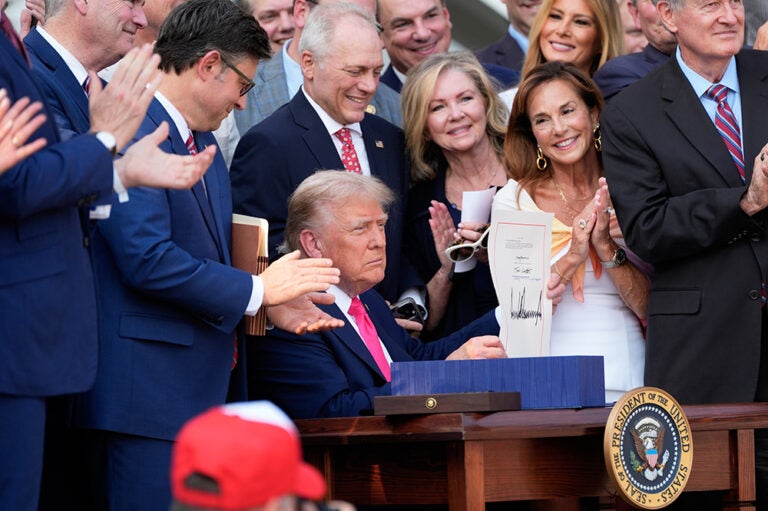The Peterson Foundation asked a group of respected policy experts to share their views on how a bipartisan fiscal commission could help break the cycle of governing by crisis and enable a more focused and productive discussion about solutions to our fiscal challenges. All nine essays from the group supported the creation of a fiscal commission and six noteworthy themes emerged.
Commissions Enable an Essential Debate about Policy Tradeoffs
Commissions encourage tough but necessary conversations about budgetary choices. Mark Zandi from Moody’s references Simpson-Bowles as an example: “It got the nation collectively debating hard budgetary choices in a productive way. I attended more than one hearing and D.C. dinner organized by the commission where an array of interests were voiced. It felt like everyone across the political spectrum was engaged and working to advance the ball.”
Similarly, Brian Riedl from the Manhattan Institute and Sita Slavov from George Mason University’s School of Policy and Government note that commissions encourage compromise and collaboration towards solutions. The Greenspan Commission, according to Riedl, was created after a year of “partisan warfare” and skillfully engaged policymakers “to define the policy challenge, focus on solutions, and craft reform options,” ultimately allowing for the needed change to happen through the commission. Director of the Center for Funding America’s Future at the Progressive Policy Institute, Ben Ritz, writes: “Establishing a bipartisan fiscal commission could be the first step towards breaking this fiscal deadlock and setting national priorities. An outside task force with a clear mandate to address the problem would be forced to confront the tradeoffs today’s policymakers have been unwilling or unable to.”
Bipartisan Expertise is Necessary
Multiple essays suggested that commissions should be comprised of both members of Congress – from both parties, and both chambers— as well as outside experts. Former U.S. Senator Rob Portman argues that a bipartisan, bicameral commission would benefit from the diverse views and experiences of sitting members as well as outside experts to provide technical expertise and a variety of perspectives. Riedl recommends that chairpersons and ranking members of related committees be included as members of a commission in order to engage and invest these leaders in a commission’s final recommendations. Additionally, Dana Peterson and Lori Esposito Murray of the Committee for Economic Development (CED) point out that because the national debt is a bipartisan issue, it must be solved with a bipartisan approach.
Recommendations Should Be Fast-Tracked in Congress
Numerous experts agreed that a vital part of a successful commission is a fast-track process for lawmakers to consider recommendations with an up-or-down vote. Portman points out that a fast-track process has successfully been used in trade agreements over 15 times since 1979. Leon Panetta, former Secretary of Defense, Director of the Office of Management and Budget, and Member of Congress cites the Base Realignment and Closure Commission as a unique example of congressional follow-through. The commission recommendations were first sent to the President for approval and then went to Congress for an up-or-down vote.
Get Buy-In from the Leadership of Both Parties
Change happens when political leaders support the commission. As Riedl wrote, commissions “cannot create momentum or force a deal where there is no will.” Panetta and Riedl cite the Greenspan Commission as a case in which political will was aligned with the commission, allowing the commission’s objective to be accomplished. President Reagan and House speaker Tip O’Neill were involved in “proxy negotiations” prior to the release of the commission’s recommendations and vowed not to publicly oppose them. Bill Hoagland from the Bipartisan Policy Center argues that “the first lesson from the history of fiscal commissions is the unquestionable prerequisite that the President, regardless of party, be directly involved.”
Separately, Riedl cites the Kerrey-Danforth Entitlement and Tax Reform Commission and the Joint Select Committee on Deficit Reduction as examples of when commissions were set up for failure because party leadership was opposed to them. Heidi Heitkamp, who served as a Senator from North Dakota, points out that while Simpson-Bowles identified policy solutions, the commission did not reach a supermajority because “it failed to address the political obstacles inherent in any plan that calls for increased revenue and reduced spending.” Successful commissions engage politicians and produce balanced, comprehensive recommendations that garner Congressional support.
Engage the Public
Various experts note that successful commissions involve the public, improving the product and creating stronger incentives for legislators to act. Hoagland writes that the public has to be “involved, educated, and understand the consequences of inaction. Legislators will not make difficult decisions unless their constituents see a need and reason to act.” Heitkamp agrees, stating that “in addition to building the plan, this commission needs to get the American public bought into the understanding that this is a crisis, get voters invested in the outcome, and then go sell the solution.”
Peterson and Murray note that there is support for a fiscal commission today: “87% of [CEOs and Board Directors polled] believe a bipartisan congressional commission on fiscal responsibility could help reduce the national debt.” Slavov recommends a survey designed to have the public consider policy tradeoffs, which would increase public awareness and identify public preferences for addressing the fiscal situation. In similar fashion, Portman thinks a public comment period is advisable for any new commission.
Look Across the Entire Budget
There was universal agreement among all nine essays that a successful commission should look across the entire budget for savings -- both mandatory and discretionary spending as well as the tax code. Authors agreed that a comprehensive approach allows for a more balanced and durable solution that shares the pain, but also shares the benefits.
Conclusion
Commissions have been used successfully to evaluate and address key issues in the United States – in many cases breaking through partisan gridlock. As Ritz wrote, “The federal government is in desperate need of a fiscal correction,” and a fiscal commission is a viable way to reform spending and revenue habits and put the United States on a better path. Moving forward, the lessons learned from past commissions can help inform the structure and scope of a fiscal commission to help position it for success in addressing high and rising deficits and a growing national debt. Reflecting the urgency of the United States’ outlook for debt, lawmakers from both sides of the aisle in both the House and Senate have proposed legislation for a bipartisan fiscal commission – and the time to act is now.
Photo by Anna Rose Layden/Getty Images
Further Reading
How Did the One Big Beautiful Bill Act Affect Federal Spending?
Overall, the OBBBA adds significantly to the nation’s debt, but the act contains net spending cuts that lessen that impact.
What Is the Disaster Relief Fund?
Natural disasters are becoming increasingly frequent, endangering lives and extracting a significant fiscal and economic cost.
How Much Does the Government Spend on International Affairs?
Federal spending for international affairs, which supports American diplomacy and development aid, is a small portion of the U.S. budget.


